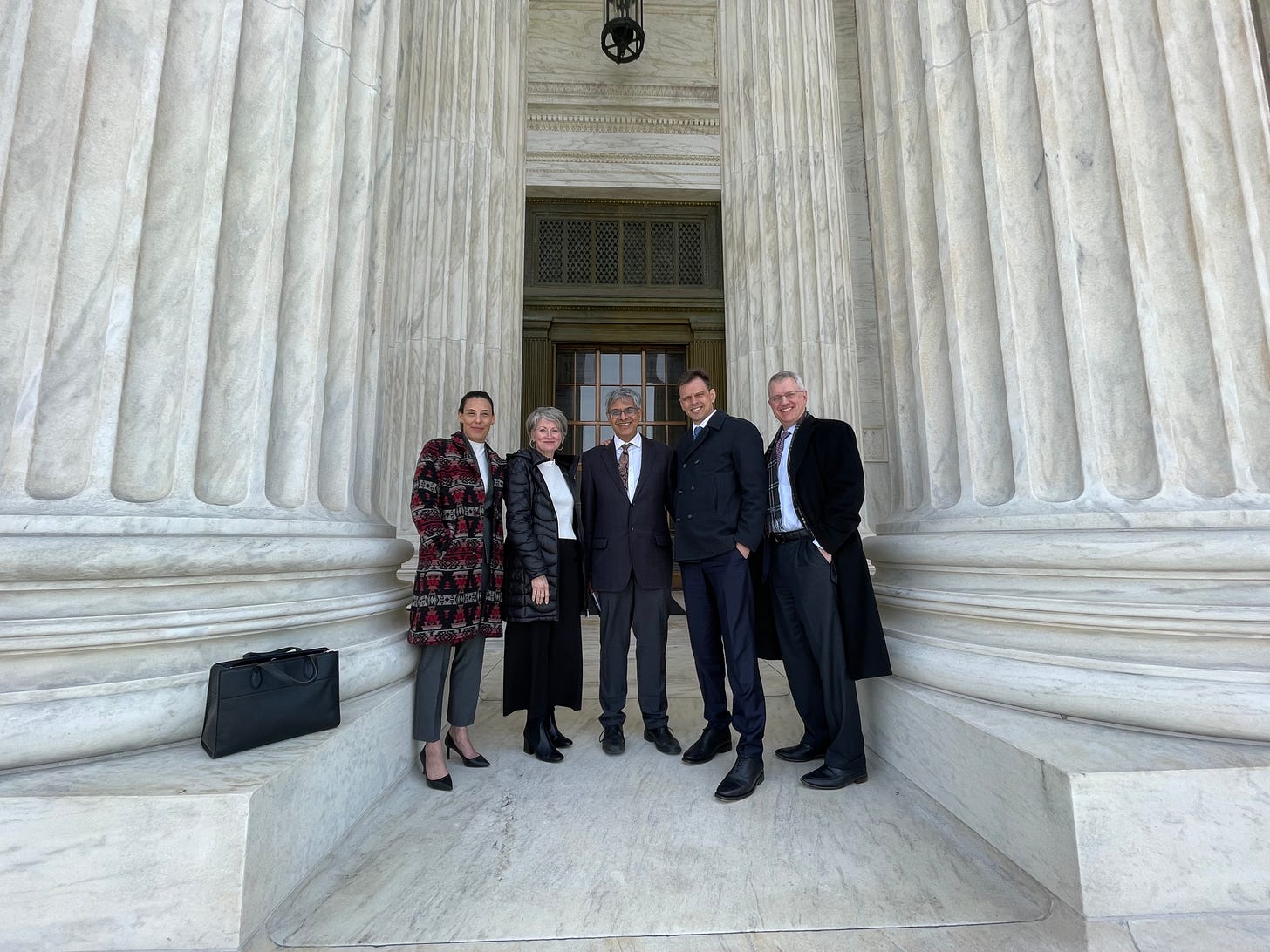Supreme Court Oral Arguments: In-Depth Analysis, Part 1
My commentary on the government’s arguments and the Justices’ interrogations of the government's lawyer.

I was inside the Supreme Court on March 18, along with my co-plaintiffs, our lawyers, two of the Twitter Files journalists, Michael Shellenberger and Andrew Lowenthal, Representative Jim Jordan and Louisiana Governor Jeff Landry, for oral arguments in our case Murthy v. Missouri (formerly Missouri v. Biden) challenging government censorship on social media. I present here my observations and analysis.
The government’s opening argument attempted to characterize its behavior as friendly persuasion toward the social media companies, not overt coercion. Justice Thomas—famous before covid for not asking questions but now more vocal on the court—opened by asking whether a distinction between coercion vs. persuasion was the only way to think about this case. Were there any First Amendment cases in which state action was implicated without encouragement or coercion, e.g., simply through deep entanglements that may appear on the surface to be cooperative? He also asked what the constitutional basis was for “government speech” (hint: there is none). The government’s attorney had to admit that the court has not located government speech in any constitutional provision. The First Amendment is a restraint on the government, not on citizens.
Justice Sotomayor then asked what exactly the injunction does—specifically, what is the meaning of the criteria established by the Circuit Court that the government violates the Constitution when it uses coercion or “significant encouragement”? The definition of the latter term, used in the Fifth Circuit’s injunction, will no doubt be something the Supreme Court justices will need to wrestle with: what counts as “significant” encouragement?
For purposes of an injunction the plaintiffs need to establish several criteria, including our likelihood to prevail on the merits of the argument, the imminent threat of future injury if the court does not intervene, and whether the injunction will likely redress the plaintiff’s injuries. Justice Alito asked about possible future injuries, which could include things like having one’s social media account suspended. Following up on this question of redressability, Justice Gorsuch—who generally does not favor injunctions—asked whether the injunction will “to some extent” remedy the plaintiffs’ injuries. It seems clear that the answer there is yes.
Regarding our standing to bring the case, Alito noted that both of the lower courts found that injuries to my co-plaintiff Jill Hines were directly traceable to government action (she is named specifically in one of their missives), and it only takes one plaintiff with standing to bring the case. Alito pointed out in this regard that the Supreme Court “generally does not reverse findings of fact that have been approved by two lower courts,” both of which found that all seven of the plaintiffs had standing.
By contrast, Justice Kagan seemed very focused on the issue of traceability as it relates to standing: how can we prove that our examples of being censored—which are not disputed—were directly the result of government action rather than decisions by the platforms or their algorithms? Alito later asked whether the traceability/causation burden of proof fell on the plaintiff or the defendant, and Sotomayor mentioned the Clapper case, which used a higher standard for traceability.
There are many problems, however, with the evidential threshold that Kagan and Sotomayor seemed to be embracing: even with extensive discovery—which is hard to get in any event—finding the entire trail from a government directive to the takedown of a specific YouTube video or Tweet would be virtually impossible. No such evidential standard would be applied, for example, in a racial discrimination case. To claim that we lacked standing because we did not have the entire communications thread would open a wide path for government censorship: all the government would need to do is demand censorship of particular ideas or viewpoints or topics without naming names and nobody who was censored would be able to establish standing. I think it’s very unlikely that the court will rule against us on the question of standing.
Justice Alito then got to the substance and merits of the case: “I read the emails between the White House and Facebook [presented in our evidence], which showed constant pestering of Facebook.” He went on to point out, “I cannot imagine federal officials taking this approach to the print media…. It’s treating these platforms like subordinates.” He then asked the government’s attorney, “Would you treat the New York Times or the Wall Street Journal this way? Do you think the print media considers themselves ‘partners’ with government? I can’t imagine the federal government doing that to them.” The government’s attorney admitted, “The anger is unusual”—referring to Rob Flaherty, White House Director of Digital Communications, literally cursing at the company executive and berating him for not taking action quickly enough to comply with White House censorship demands.
Keep reading with a 7-day free trial
Subscribe to Human Flourishing to keep reading this post and get 7 days of free access to the full post archives.



